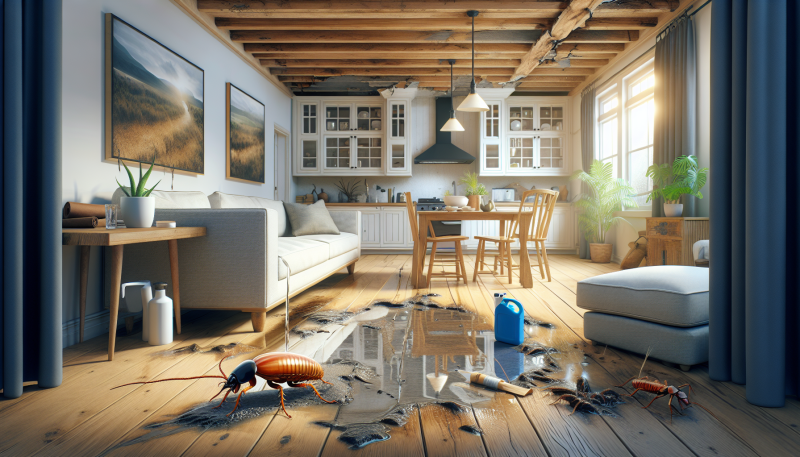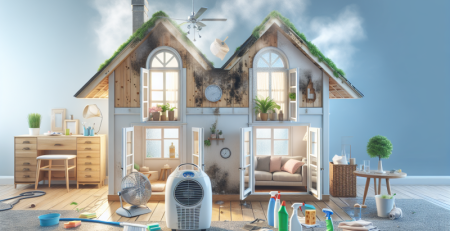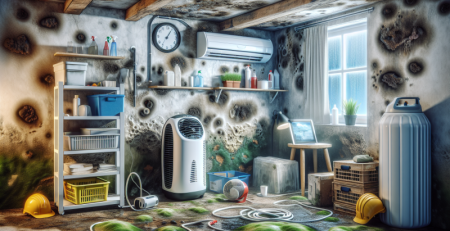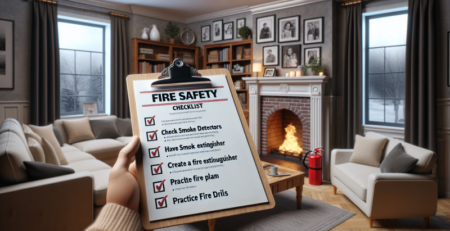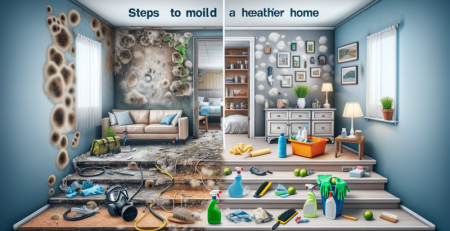The Connection Between Water Damage and Pest Infestations
**The Connection Between Water Damage and Pest Infestations**
Have you ever wondered how water damage can lead to pest infestations in your home? The relationship between these two issues is more significant than many homeowners realize. Water damage creates an ideal environment for pests, making it crucial to understand this connection to protect your property effectively.
When water infiltrates your home, it not only causes structural damage but also attracts unwanted pests like termites, rodents, and mold. These pests thrive in damp conditions, leading to potential health risks and further property damage. Experts emphasize that addressing water damage promptly is essential to prevent these infestations from taking hold.
But the implications of water damage extend beyond just pests. Understanding how to manage and mitigate these risks can save you time, money, and stress in the long run. Join us as we delve deeper into the connection between water damage and pest infestations, and discover effective strategies to safeguard your home from these dual threats.
Understanding Water Damage
Water damage refers to the destruction caused by the intrusion of water into areas where it can cause harm. Common causes include flooding, leaks, and plumbing issues. Each of these scenarios can lead to significant damage if not addressed promptly.
There are three primary types of water damage: clean, gray, and black water. Clean water originates from sources like broken pipes, while gray water comes from appliances like dishwashers. Black water, however, contains harmful contaminants and poses serious health risks. Understanding these distinctions is crucial for effective remediation.
Signs of water damage in homes and buildings are often visible and can include discoloration on walls and ceilings. Homeowners may also notice mold growth or experience musty odors. These indicators suggest that moisture is present and could lead to further complications. For more information on how to address these issues, visit our water cleanup services. Additionally, if mold is a concern, check out our mold cleanup options. Addressing water damage promptly can prevent more severe problems down the line.
The Impact of Water Damage on Structures
Water damage significantly impacts building materials, leading to severe structural issues. For instance, wood can warp, swell, or rot when exposed to moisture. Similarly, drywall absorbs water, causing it to weaken and crumble. Insulation also suffers, losing its effectiveness and promoting mold growth.
Untreated water damage can result in long-term problems, such as compromised structural integrity. Over time, this can lead to costly repairs and even safety hazards. According to the Insurance Information Institute, water damage accounts for nearly 20% of all homeowners insurance claims. Moreover, a study by the National Association of Home Builders revealed that 15% of homes have experienced water damage, highlighting the widespread nature of this issue.
Ignoring water damage can escalate repair costs significantly. For example, mold can develop within 24 to 48 hours, further complicating the situation. To mitigate these risks, prompt action is essential. Homeowners should consider professional water cleanup services to address issues quickly. Additionally, understanding the potential for mold growth can help prevent further damage. Always prioritize the health of your structure to avoid extensive repairs down the line.
Introduction to Pest Infestations
Pest infestations occur when pests invade a space in significant numbers, disrupting normal living conditions. Common types include termites, rodents, and cockroaches. Each of these pests plays an ecological role, yet they often seek shelter in homes for food, warmth, and safety. Termites, for instance, break down wood, while rodents can help control insect populations. However, their presence in homes can lead to serious issues.
The health risks associated with pest infestations are alarming. Pests can transmit diseases, posing threats to human health. For example, rodents can carry hantavirus, while cockroaches are known to trigger allergies and asthma. Furthermore, the presence of pests can lead to contamination of food and surfaces, increasing the risk of illness.
To mitigate these risks, it’s essential to address water damage promptly, as it creates an inviting environment for pests. For more information on how to protect your home, visit our services page or learn about our about us section. If you suspect an infestation, don’t hesitate to contact professionals for assistance.
The Link Between Water Damage and Pest Infestations
Water damage significantly alters the environment within a home, creating ideal conditions for pests. Excess moisture not only provides a water source but also fosters the growth of mold and mildew, which serve as food for various insects. Consequently, pests like termites thrive in damp wood, while mosquitoes breed in standing water. Rodents, too, find shelter in water-damaged areas, as they seek refuge from predators and harsh weather.
For instance, a leaky roof can lead to water pooling in attics, attracting both insects and rodents. Similarly, a flooded basement often becomes a breeding ground for mosquitoes. These pests can multiply rapidly, leading to infestations that are difficult to control. Moreover, the presence of food sources, such as decaying materials, further exacerbates the problem.
To mitigate these risks, homeowners should address water damage promptly. Regular inspections and timely repairs can prevent pest infestations. For more information on effective solutions, visit our water cleanup and mold cleanup services. Taking action now can safeguard your home from unwanted pests.
Prevention Strategies for Water Damage
Homeowners can take several proactive measures to prevent water damage effectively. Regular maintenance is crucial. Inspect roofs, gutters, and downspouts frequently. Ensure they are clear of debris to facilitate proper water flow. Additionally, check for leaks in plumbing systems. Addressing these issues early can save significant costs later.
Proper drainage and landscaping play vital roles in diverting water away from structures. Sloping the ground away from your home helps prevent water accumulation. Consider installing French drains or rain gardens to manage excess water. These features not only protect your property but also enhance its aesthetic appeal.
Identifying potential water damage risks is essential. Look for signs of moisture in basements and crawl spaces. Musty odors or discoloration on walls can indicate hidden problems. Regularly inspect your home’s foundation for cracks. By staying vigilant, you can address issues before they escalate. For more information on effective strategies, visit our water cleanup services page or learn about our mold cleanup solutions. Taking these steps will help safeguard your home from water-related issues.
Pest Control Measures Post-Water Damage
After experiencing water damage, addressing potential pest infestations is crucial. First, assess the extent of the damage. Remove any standing water immediately to prevent pests from thriving. Next, thoroughly dry out affected areas. Use fans and dehumidifiers to eliminate moisture.
Once the area is dry, inspect for signs of pests. Look for droppings, nests, or damage to structures. While DIY methods may seem tempting, hiring professional pest control services often yields better results. Experts can identify pest types and apply targeted treatments effectively. Additionally, they can offer long-term solutions that DIY methods might overlook.
After addressing the infestation, implement preventive measures. Seal cracks and crevices in walls and foundations to block entry points. Ensure proper drainage around your property to divert water away. Regularly inspect your home for leaks and repair them promptly.
For more information on effective pest control strategies, visit our services page. To learn about our comprehensive water cleanup solutions, check out our water cleanup section. Finally, if you have questions, feel free to contact us for assistance.
The Role of Professional Services
When dealing with water damage, hiring professionals is crucial. They possess the expertise to assess the situation accurately. Moreover, they can implement effective restoration strategies. This not only minimizes damage but also prevents future pest infestations. A reputable service should have certifications and positive customer reviews. Look for companies that offer comprehensive services, including water cleanup and pest control.
Costs for professional services can vary significantly. Typically, homeowners might spend between $1,000 and $5,000, depending on the extent of the damage. Timeframes also differ; restoration can take anywhere from a few days to several weeks. Therefore, it’s essential to get a detailed estimate upfront.
Additionally, consider the company’s response time. Quick action can prevent further complications. Always ask about their methods and equipment. This ensures they use the latest technology for effective results. For more information on their offerings, visit services or contact them directly.
Case Studies and Real-Life Examples
In a recent case study, a homeowner in Florida faced severe water damage after a pipe burst. Within weeks, they noticed an influx of pests, particularly termites and cockroaches. “I never realized how quickly pests could invade after water damage,” the homeowner remarked. This situation highlights the urgent need for effective water cleanup services.
Another example comes from a family in Texas. After heavy rains, their basement flooded, leading to a significant rodent infestation. “We thought we could handle it ourselves, but the pests just kept coming back,” they shared. This emphasizes the importance of professional pest control following water damage.
Successful restoration efforts can significantly reduce pest problems. In both cases, homeowners sought help from experts. They received comprehensive restoration and pest control services. As a result, they reported a dramatic decrease in pest activity. “Now, our home feels safe and clean again,” one homeowner stated. These examples illustrate the critical link between water damage and pest infestations, underscoring the need for prompt action. For more information on effective solutions, visit our services page.
Frequently Asked Questions (FAQs)
When dealing with water damage, the first signs often include discoloration on walls or ceilings. You might also notice a musty odor or peeling paint. These indicators signal that moisture has infiltrated your home. To identify a pest infestation, look for droppings, gnaw marks, or unusual noises. Additionally, you may see nests or witness pests scurrying around.
Water damage can indeed lead to mold growth, which thrives in damp environments. Common pests associated with water damage include termites, cockroaches, and rodents. These pests are attracted to moisture and can exacerbate existing issues.
To prevent pests after experiencing water damage, ensure proper drying and ventilation. Sealing cracks and gaps in your home can also deter unwanted visitors. When it comes to addressing water damage versus pest infestations, prioritize the water damage first. This approach helps eliminate the conditions that attract pests.
Regular inspections for water damage and pests are crucial. Aim for at least once a year, or more frequently if you live in a high-risk area. For more information on water cleanup and mold cleanup, visit our services page.
Conclusion and Key Takeaways
In summary, addressing water damage and pest infestations is crucial for maintaining a healthy living environment. Water damage creates ideal conditions for pests, leading to potential infestations. Therefore, it is essential to act quickly when you notice signs of either issue. Prompt intervention can prevent further complications and costly repairs.
Moreover, taking preventive measures can significantly reduce the risk of both water damage and pest problems. Regular inspections and maintenance of your property can help identify vulnerabilities early. If you encounter severe issues, do not hesitate to seek professional help. Experts can provide effective solutions tailored to your specific situation.
For more information on how to protect your home, visit our services page. Additionally, you can learn about our projects to see how we have helped others. Remember, a proactive approach is your best defense against these challenges.
